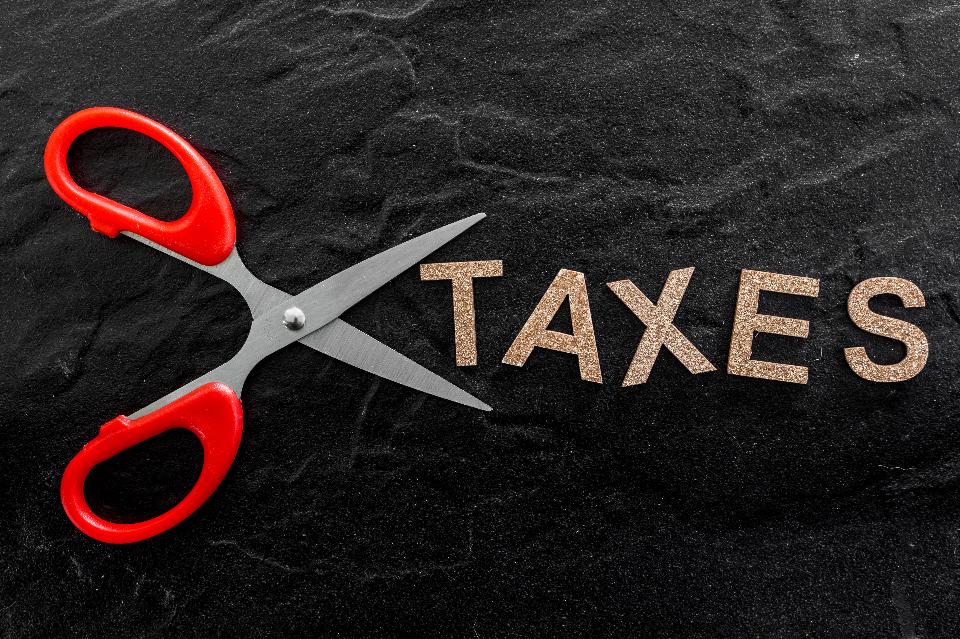How to Lower Your Taxes in 2017
It’s not too early for you to improve your financial health for 2017! Here are several things you could do in the next year to lower your taxes and boost your refund.

You haven’t even filed your 2016 tax return yet, let alone think about your 2017 taxes. With the election of Donald Trump and a Republican-controlled Congress, it’s likely that massive across-the-board tax cuts will be enacted this year.

Buy a house – or sell it strategically
If you’re still trying to decide whether to rent or buy a home, remember that mortgage interest, mortgage insurance, points, and property taxes are deductible. If you will be selling your home, learn about the home sale exclusion. If you meet the requirements, you can avoid paying taxes on up to $250,000 ($500,000 if you’re married and file your taxes jointly) of your gain on the sale of your primary residence.

Establish and fund retirement plans
This is one of the best ways to gain tax breaks. Not only can saving for retirement boost your tax refund, but it can also help set you up for financial freedom later in life. Traditional (not Roth) IRA, 401(k), 403(b), or 457 plans, your contributions may be tax-deductible. For example, if you contribute $5,000 to a traditional IRA and you are in the 25% tax bracket, you’ll be getting $1,250 in tax savings.
On top of this deduction, low- to moderate-income taxpayers may qualify for the Saver’s Credit, which is literally free money just for contributing to a retirement account. This tax credit can be worth up to $1,000 for singles or $2,000 for couples.

Be generous when charities need it most
Consider giving to charity steadily throughout the year. Most charitable donation occur during the last month of the year when most everyone is in the giving spirit, but consider donating to your favorite charities at certain times of the year. For example, if you donate to your local animal shelter, consider handing them a donation check around April or May. They will appreciate your donations whenever they come, but it could be an especially welcome gift if it comes at a time they have a limited cash flow. Think of it this way, wouldn’t it be easier on your wallet to donate periodically throughout the year, as opposed to trying to cram all of your donations in the last few weeks of the year?

Take a class
It’s well-known that college students may qualify for a tax credit for paying tuition, known as the American Opportunity Credit. However, this is only good for the first four years of college, and only if a degree or certificate is being pursued.
On the other hand, the lesser-known Lifetime Learning Credit doesn’t have these restrictions. The credit is worth 20% of up to $10,000 worth of educational expenses, and there is no degree program, credit hour or other requirement. You can take a single class for personal enrichment or to obtain career skills and qualify for this credit. If you take a class that costs $1,000, this credit can give you $200 of that amount back.
The biggest restriction on the Lifetime Learning Credit is income-related. For the 2017 tax year, the credit phases out for incomes above $55,000 (singles) and $110,000 (married filing jointly), and disappears completely above incomes of $65,000 and $130,000, respectively.

Get a change of scenery
If you’ve been toying with the idea of moving to a different area of the country, it may interest you to know that moving expenses are tax deductible if the move is related to the start of a new job.
You don’t even need to have a new job lined up before you move. For your expenses to qualify, the move needs to pass two tests:
- Time test: You must work full-time for 39 out of the 52 weeks immediately following the move. In other words, if you find full-time employment within three months or so of moving, you can still get the tax break.
- Distance test: Per the IRS’ wording, “Your new workplace must be at least 50 miles farther from your old home than your old job location was from your old home. If you had no previous workplace, your new job location must be at least 50 miles from your old home.” While this is a bit technical, the point is that your move needs to be sufficiently far away from your old job location to justify the tax break.
If these two tests are satisfied, you can deduct expenses such as driving mileage, packing supplies, shipping costs, hired movers, storage expenses, and lodging expenses on the way to your new home.
The best part of all is that the moving expenses deduction is an “above-the-line” deduction, which means that you can take it whether or not you itemize deductions on your tax return.

Make the most of tax credits
Tax credits are more valuable than deductions because they shrink your taxable income on a dollar-for-dollar basis. For example, while a $1,000 deduction can save you $250 if you’re in the 25% tax bracket, a $1,000 tax credit can shrink your tax bill by $1,000. Tax credits are available for all kinds of things, such as education expenses, energy-efficient home improvements, the adoption of children, the care of children and dependents, and much more. A particularly powerful credit, if you earn relatively little, is the Earned Income Tax Credit. It can be worth thousands of dollars to those who qualify.

Hire a tax pro
One of the best ways to shrink your tax bill is to hire a good tax professional to strategize with you and perhaps prepare your return. Pros understand the tax code far better than you do, and they can offer many tax-reducing strategies, too. Don’t just hire anyone or go to a random tax-preparer, though — ask for references from friends or seek an “Enrolled Agent,” a tax pro licensed by the IRS who is authorized to represent you before the IRS if need be. You might find one through the website of the National Association of Enrolled Agents.

